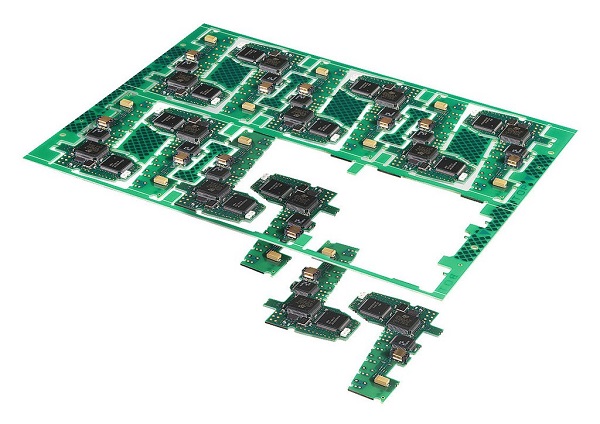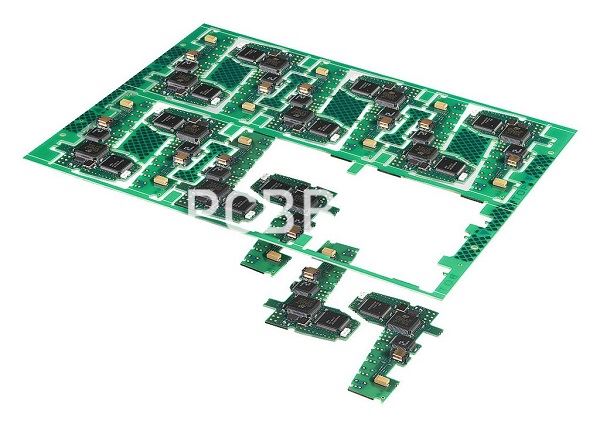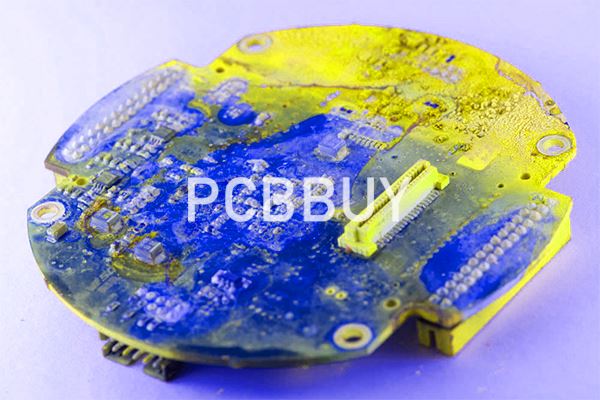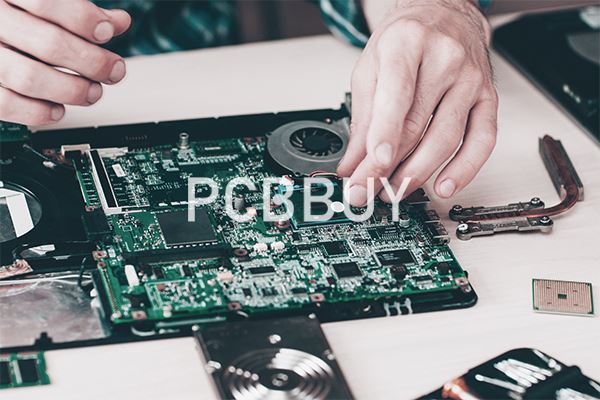What Is PI in PCB & What Are the Features of It?
By:PCBBUY 04/07/2022 09:55

The majority of flex PCBs have a polyimide (PI) film as a substrate. PI film does not soften when heated, but it stays flexible after thermosetting. Many thermosetting resins like PI become rigid after heating, making PI a superior material in flex PCB construction. Standard PI film does not have good resistance to humidity and tears, but choosing upgraded PI film mitigates these issues.
If you are curious about the PI in PCB, please check and read the content below for more professional knowledge about it.

What are the relationship of PI PCB and others?
PI is a material with very good high temperature resistance and will be used in aerospace technology. PI has two main locations in the board.
As a circuit board substrate
This is the material that most boards are used in. The board mainly plays a role of reinforcement and thickening, mainly because the copper foil of the board is very thin, not enough to support the glue and the cover film separately. In this position of use, the PI is mainly a layer having a plurality of layers of PI for lamination, and the PI of the single layer is also very thin.
PI is not the only material used as a substrate, and there are also like PET, FR4, ET, etc., but because the soft board is affected by the material shrinkage during production, it is produced for the production yield and efficiency. Most of the FPC flexible circuit boards are made of PI as the insulating material, unless the customer requests other materials.
As a cover film
The single-layer PI is very thin, and PI has a variety of properties, not only high temperature resistance, but also excellent in wear resistance and insulation. Therefore, in the place where the gold finger of the circuit board is used, the role of the PI as a protective film is often used, mainly because the gold finger needs a very connector to perform the embedding time, and the use of the ordinary cover film is long and the gold finger damage is easy.
What are the working principles of PI PCB?
Generally, PDN refers to the entire power system that provides power for active circuits on PCB. It is composed of all interconnections from VRM (voltage regulator module) to the metallization of pads and die on IC that are used to locally supply power current and return current. These include VRM, bulk decoupling capacitors, vias, traces, the plane of the PCB, the additional capacitors of the PCB, the welding balls or leads of packaging, and the interconnection of packaged to the PCB, wire bonds or C4 soldering balls, and IC itself. In high-speed PCB, a pair of adjacent complete copper layers are respectively set as power and ground, which forms a power/ground pair, also known as the power bus.

On high density and high speed PCB, the common power/ground pairs provide power for several IC chips. According to the structural characteristics of PDN, the impedance of PDN is not zero, and it changes with the change of current spectrum. By studying the basic circuit structure and working process of digital IC, it can be known that when digital IC works, switching current will be formed, and SSN (Simultaneous Switching Noise) will be generated. PDN can be regarded as a simple circuit that provides power supply to IC through series connection of PDN impedance and IC impedance. Power voltage fluctuation is caused by switching current through PDN impedance, which forms the power ripple. The size of power ripple is related to switching current and PDN impedance.
PI refers to a polyimide resin material, which is now widely used in various fields, is a very good performance of the material, some people say that PI is a landmark material to promote the reform of electronic products. We mainly explain the position and function of FPC circuit board and PI. PI is a material that has very good heat resistance and will be used in space technology. PI has two main compatible positions on the circuit board.
As a PCB substrate
This is the material that most of the circuit boards are used in. The substrate mainly plays the role of strengthening and thickening, mainly because the copper foil of the circuit board is very thin and not enough to support the glue and covering film alone. In this position of use, the thickness of PI is mainly obtained by laminating multiple layers of PI, and the PI of single layer is also very thin.

PI is not the only one as the substrate material, while others, such as: PET, FR4, ET, etc., but the soft board at the time of production is affected by the material increases and sex, in order to produce the problem such as yield and efficiency in the production of FPC flexible circuit board when most are based on PI used as insulation materials, unless the customer requires the use of other materials.
Three types of manufacturing methods of 2L-FCCL are available:
• Electroplating;
• Film coating;
• Lamination;
By comparing three methods, it can be concluded that deposited electroplating metal layer on polyimide film is easy to be produced in rolling and thinner substrate material and copper foil can be picked up with low cost. Film coating is applicable for mass-volume production with a low cost. Lamination works better on double-side board fabrication.
Industry Category











